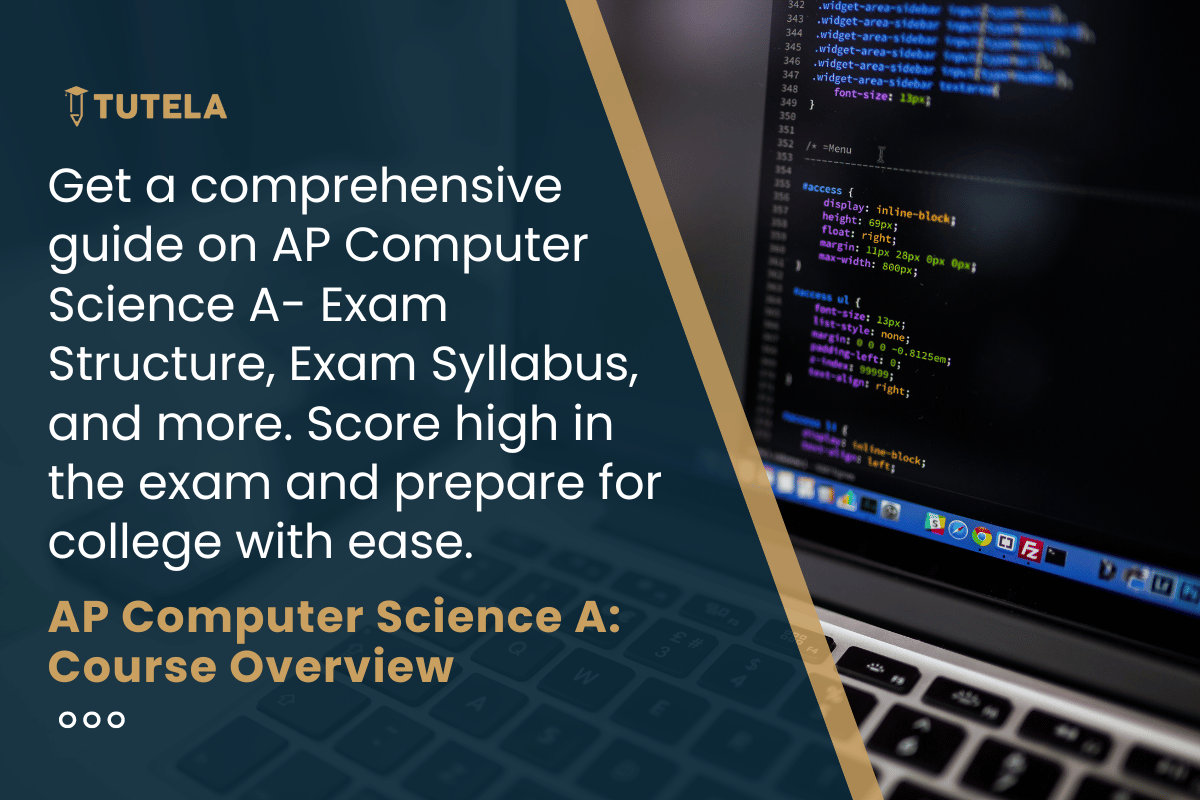
Welcome, coding enthusiasts and aspiring computer scientists, to a thrilling exploration of the realm of AP Computer Science A! Are you prepared to embark on a journey into the intricacies of programming and algorithmic thinking? Whether you're gearing up for the AP Computer Science A exam or simply fueled by a passion for coding, buckle up for an enlightening adventure.
In this blog, we aim to be your trusted companion and guide throughout your AP Computer Science A journey. We'll unravel the entire syllabus, unit by unit, in a conversational and easily digestible manner. Whether you're navigating the complexities of coding for the exam or simply keen on expanding your programming horizons, this blog will serve as your go-to resource for all things related to AP Computer Science A. The AP Computer Science A Exam is scheduled on 8th May 2024.
AP Computer Science A is not just about learning to code; it's about cultivating algorithmic thinking and problem-solving skills. The course empowers students to:
Now, let's dive into the AP Computer Science A syllabus to uncover the exciting journey that awaits.
| Unit Name | Description | Weightage in the Exam |
| Unit 1: Primitive Types | In this foundational unit, students explore the essence of primitive types, laying the groundwork for understanding basic data types in programming. | 2.5–5% |
| Unit 2: Using Objects | Building upon the basics, Unit 2 introduces the concept of objects. Students delve into the art of creating and manipulating objects in a program. | 5-7.5% |
| Unit 3: Boolean Expressions and If Statements |
Unit 3 intensifies the learning journey by focusing on boolean expressions and if statements. Students grasp the logic behind decision-making in code. |
15-17.5% |
| Unit 4: Iteration | The heart of many algorithms, Unit 4 delves deep into iteration. Students master the art of loops, understanding how to efficiently repeat code. | 17.5-22.5% |
| Unit 5: Writing Classes | Unit 5 introduces the concept of writing classes, emphasizing the importance of organized and modular code design. | 5-7.5% |
| Unit 6: Array | Arrays take center stage in Unit 6, where students learn to work with structured collections of data. | 10-15% |
| Unit 7: ArrayList | Expanding on arrays, Unit 7 introduces ArrayLists, dynamic data structures that enhance flexibility in coding. | 2.5-7.5% |
| Unit 8: 2D Array | Unit 8 extends the understanding of arrays into two dimensions, which is crucial for scenarios where data is organized in rows and columns. | 7.5-10% |
| Unit 9: Inheritance | In Unit 9, students delve into the concept of inheritance, a fundamental principle in object-oriented programming. | 5-10% |
| Unit 10: Recursion | The final unit, Recursion, introduces students to the concept of functions calling themselves, opening doors to elegant and efficient solutions. | 5-7.5% |
The AP Computer Science A Exam consists of two sections. The first, Multiple Choice, comprises 40 questions to be answered in 1 hour and 30 minutes, contributing 50% to the total score. Questions are mostly individual, with occasional sets. Computational Thinking Practices 1, 2, 4, and 5 are assessed in this section. The second section, Free Response, involves 4 questions to be completed in the same time frame, also accounting for 50% of the score. This format provides a balanced evaluation of students' computational skills and practices.
The knowledge and skills acquired in AP Computer Science A are valuable in various fields. Here are ten majors and fields that benefit from a strong foundation in computer science:
1. Computer Science: An obvious choice, a major in computer science opens doors to a myriad of opportunities in software development, artificial intelligence, and more.
2. Data Science: With a focus on data analysis and interpretation, data science is a field where programming skills are highly valuable.
3. Computer Engineering: For those interested in the hardware side of computing, computer engineering involves designing and developing computer systems.
4. Information Technology (IT): Managing and implementing computer systems and software solutions, IT professionals leverage programming skills.
5. Software Engineering: This major focuses on the systematic design, development, testing, and maintenance of software.
6. Cybersecurity: In the age of digital threats, cybersecurity professionals protect systems and data from unauthorized access, making programming skills essential.
7. Game Development: Creating interactive and engaging games requires a strong foundation in programming and computer science principles.
8. Artificial Intelligence (AI): AI involves creating intelligent agents that can perform tasks that typically require human intelligence, often relying on advanced programming.
9. Web Development: Building websites and web applications necessitates knowledge of programming languages for both front-end and back-end development.
10. Computer Graphics: This field involves creating visual content using computers, often requiring programming skills for rendering and animation.
TutelaPrep’s College Navigator allows students to search for colleges based on their preferred country and course. Not only that, it also provides valuable insights into each college’s specific admission requirements for those exams. Through College Navigator, you can even connect with alumni at your chosen colleges to get a firsthand feel for campus life and academics.